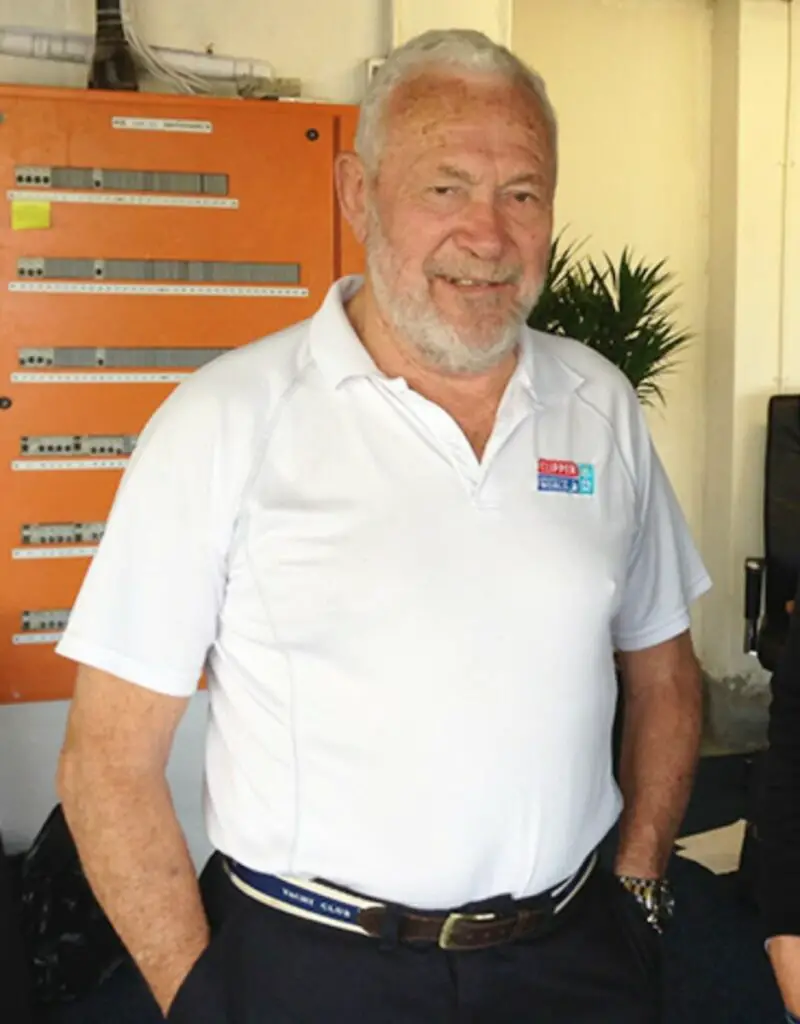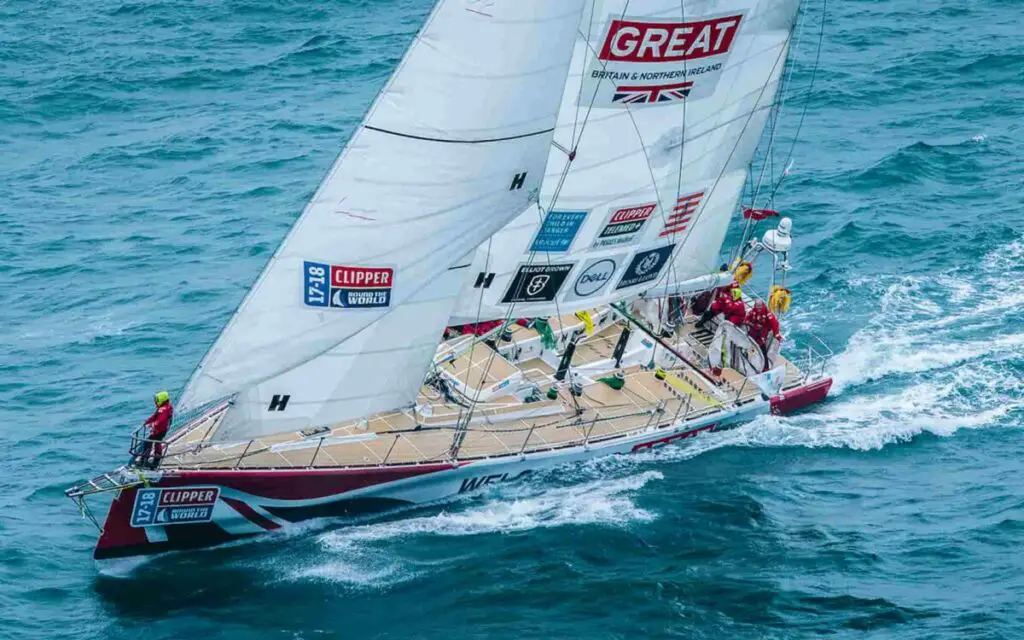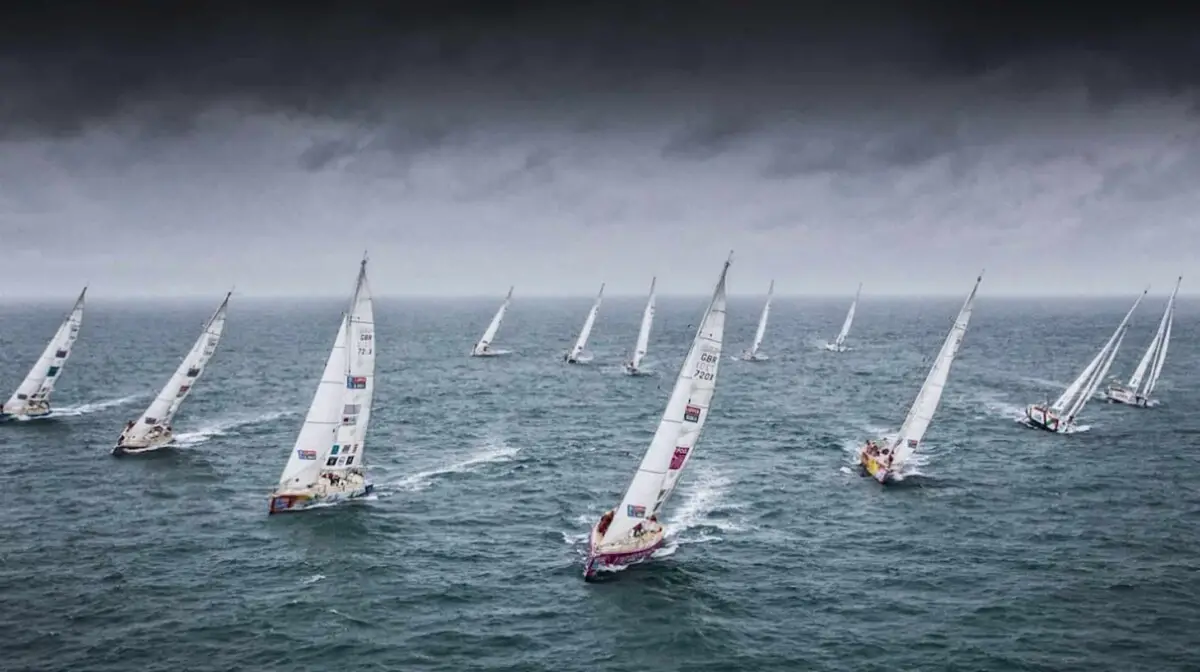The Round the World Clipper Race is not only a thrilling sporting event but also a testament to human endurance, skill, and the spirit of adventure. This epic journey takes participants on a circumnavigation of the globe, providing challenges, excitement, and unforgettable experiences along the way. In this article, we will explore the history, race route, challenges, boats, and training involved in this incredible race.
A Brief History of the Clipper Race

Photo of Sir Robin Knox-Johnston – Credit Wikipedia
Launched in 1996 by Sir Robin Knox-Johnston, a legendary sailor and the first person to sail solo non-stop around the world, the Clipper Race has come a long way since its inception. Over the years, the race has grown in popularity and prestige, attracting sailors and adventurers from around the globe.
The Origins of the Race
The idea for the Clipper Race was born out of Sir Robin’s desire to provide an opportunity for ordinary people to experience the thrill of ocean racing. With little or no sailing experience required, the race is designed to challenge participants both physically and mentally, while also teaching them valuable skills and fostering teamwork.
From its humble beginnings, with a small fleet of eight boats and 182 crew members, the Clipper Race has expanded to become a biennial event, attracting crews from more than 40 nations and thousands of spectators.
Evolution of the Clipper Race
As the race has evolved, so too have the boats and the route. The first race featured 60-foot yachts, while today’s fleet consists of 70-foot state-of-the-art racing yachts, designed specifically for the demanding conditions of the Clipper Race. The race route has also developed over time, incorporating new and exciting destinations and challenging sailing conditions.
Throughout its evolution, the thrilling competition and spirit of adventure have remained at the heart of the Clipper Race, continuing to inspire participants and spectators alike.
Memorable Moments in Clipper Race History
The Clipper Race has provided countless memorable moments since its inception. From nail-biting finishes to incredible personal achievements, the race has seen it all. Some of the most notable moments include the 2013-2014 race, which featured the closest finish in race history, and the 2017-2018 edition, which marked the first female Skipper to win the race.
Each edition of the race writes a new chapter in Clipper Race history, creating a lasting legacy for this unique event.
The Race Route and Key Stages
The Clipper Race route is a true circumnavigation of the globe, covering more than 40,000 nautical miles and crossing some of the world’s most challenging oceans. The race is divided into multiple stages, with crews stopping at various ports along the way.
The Starting Point: London
London serves as the traditional starting point for the race, with the iconic River Thames providing a fitting backdrop for the start of this epic journey. Crowds gather to cheer on the fleet as it departs, setting sail on their unforgettable adventure.
The race typically begins in late summer, with the 11-month competition carrying the fleet through diverse landscapes, weather conditions, and cultural experiences.
Major Ports and Stopovers
Each race includes multiple stopovers, giving crews a chance to rest, repair, and refuel before embarking on the next leg of the race. The ports and stopovers vary between races, but some mainstays include Rio de Janeiro, Cape Town, Sydney, and New York City. Along the way, sailors will encounter colorful cultures and unforgettable sights, from bustling cities to serene, unspoiled wilderness.
Each stopover serves as a marker on this epic journey, with the sailing community, local populations, and fellow competitors coming together to celebrate the extraordinary feat of circumnavigating the globe.
The Finish Line: Liverpool
After completing the race, the fleet returns to the UK, crossing the finish line in Liverpool, where it is welcomed by cheering crowds and an atmosphere of shared accomplishment and elation. For both competitors and spectators, the race’s conclusion is a celebration of perseverance, teamwork, and adventure, as the sailors conclude their round-the-world odyssey.
The Challenges and Thrills of the Race
The Clipper Race is as much about the journey as it is about the final result, with participants facing seemingly insurmountable challenges throughout the race. Some aspects that make the race such an incredible experience are navigating the world’s oceans, facing extreme weather conditions, and the camaraderie among crews.
Navigating the World’s Oceans
The race covers a vast expanse of the Earth’s surface, with sailors navigating the treacherous waters of the Atlantic, Pacific, and Indian Oceans, as well as the Southern Ocean, which skirts the edge of Antarctica. In each ocean, competitors face unique challenges, from unpredictable weather and currents to the threat of piracy and treacherous topography.
Navigating these oceans is a true test of skill and resolve, requiring crews to push their limits and rely on their instincts, training, and teamwork to successfully traverse these formidable waters.
Facing Extreme Weather Conditions
The Clipper Race exposes participants to a broad range of weather conditions, from the stifling heat and calms of the doldrums to the howling winds and mountainous waves of the Southern Ocean. Each weather condition presents its own unique set of challenges, demanding adaptability, resilience, and quick-thinking from the sailors.
Weathering these extreme conditions is a true testament to the human spirit, with sailors proving their strength and determination in the face of adversity.
Teamwork and Camaraderie Among Crews
While the Clipper Race is undoubtedly a competitive event, it is also a journey of personal growth, friendship, and cooperation. Crews quickly bond as they face adversity together, with life-long friendships forged in the crucible of the race.
Competitors often speak of a shared sense of camaraderie among the entire fleet, with the race fostering mutual respect and recognition of each other’s efforts and accomplishments.
The Boats and Equipment

The vessels used in the Clipper Race are specifically designed to withstand the rigors of the race, with advanced technology and cutting-edge equipment aiding the sailors on their voyage.
The Design and Features of Clipper Race Yachts
Clipper Race yachts are state-of-the-art, ocean-racing yachts, designed by renowned naval architect Tony Castro. These 70-foot vessels are characterized by their unique hull shape, which combines speed and stability, making them ideal for the challenging conditions of the race.
Built from a combination of carbon fiber and glass fiber, Clipper Race yachts are both lightweight and strong. They also feature an assortment of advanced systems and equipment, including watermakers, satellite communication devices, and advanced navigation systems.
Essential Gear for Crew Members
Safety is paramount in the Clipper Race, and crew members must be well-equipped to handle the extreme conditions they will face. Essential gear includes life jackets, harnesses, and personal locator beacons, as well as exposure suits, thermal clothing, and foul-weather gear for protection against the elements.
Crew members also carry tools and equipment necessary for yacht maintenance and repair, ensuring they are prepared for any obstacles that could arise during the race.
Technological Advancements in Sailing
The Clipper Race embraces cutting-edge technology to enhance the performance, safety, and engagement of the event. Advances in satellite communication, navigation systems, and meteorological data have all played a role in improving the overall race experience.
These advancements contribute to the growth and continued success of the Clipper Race, ensuring it remains at the forefront of sailing and adventure.
The Training and Preparation Process
Participating in the Clipper Race requires significant training and preparation, with crew members undergoing rigorous training programs to ensure they are ready to face the demands of the race.
Selection and Training of Crew Members
As the Clipper Race is open to sailors of all skill levels, the selection process is less about sailing ability and more about attitude, adaptability, and determination. Once selected, crew members embark on a comprehensive training program to hone their skills, with a focus on safety, seamanship, teamwork, and leadership.
Training is conducted by experienced instructors, using a combination of onshore and offshore sessions to prepare sailors for the challenges ahead.
Who can join the round-the-world clipper race?
Anyone can apply to join the round the world clipper race even with no sailing experience although you need a hefty £8,000 or $10,000 minimum, the price all depends on the leg you choose and team. You will also have to have an interview (which costs £100 or $125) to get a place and then after all that, if you succeed a lot of training will then follow. Joining is defiantly worth it for the skills you learn and the experience you get if that’s what you are into. Click this link here if you are interested in applying or just finding out more!
Pre-Race Team Building and Strategy
In the lead-up to the race, crews undertake team-building exercises, working together to establish trust and develop a strong sense of camaraderie. Alongside this, skippers and crew also develop race strategy, taking into account the complexities of the route and the variables that could impact their performance.
This pre-race process is invaluable in building a cohesive, focused crew, ready to tackle the epic adventure that lies ahead.
Safety Measures and Emergency Protocols
The Clipper Race prioritizes safety at every level, with stringent safety standards and protocols in place to protect crew members throughout the race. From the initial training program to every stage of the race itself, safety is at the forefront of all decisions and operations.
Emergency protocols and coordination with international search and rescue organizations are also in place, providing peace of mind to competitors and ensuring a quick response in the event of any incident.
With its rich history, global reach, and unparalleled sense of adventure, the Round the World Clipper Race remains a truly epic undertaking, capturing the imagination and admiration of sailors and spectators alike. The race continues to push boundaries, delivering excitement, camaraderie, and unforgettable life experiences for those brave enough to take on this monumental challenge.
